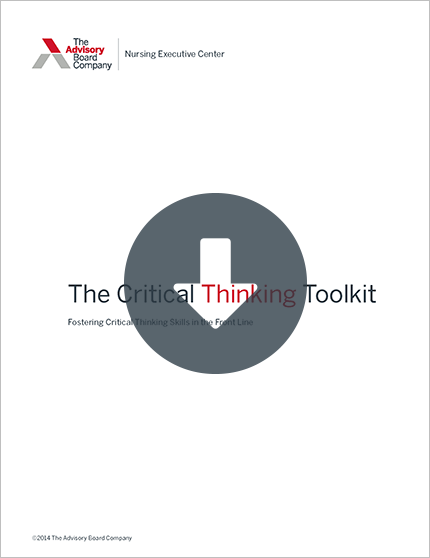Auto logout in seconds.
Continue LogoutTo encourage frontline staff to report compliance violations, Johns Hopkins University and Health System teamed up with the University of Cambridge to transform the health system's "culture of fear" into a "culture of safety," Maria Castellucci reports for Modern Healthcare. And it worked.
Upcoming webconference series: Your guide to building a better workplace culture
Why staff might not report violations
According to Mary Dixon, director of the Healthcare Improvement Studies Institute at the University of Cambridge, a culture of intimidation is common in health care and other industries where safety is critical.
At Hopkins, officials were aware residents, medical students, and nurses were hesitant to challenge tenured physicians on patient safety or raise concerns, but past efforts to address the problem were underutilized, Castellucci reports.
"It seemed like we needed to do something more global to really say to people, 'We are interested in hearing from you,'" Janice Clements, vice dean for faculty at Johns Hopkins School of Medicine, said.
Time for a change
To change the culture around incident reporting, Hopkins in 2014 took a different approach: the health system partnered with the University of Cambridge to create and conduct an anonymous phone survey to identify the aspects of the health system's culture that prevented clinical staff from reporting compliance issues.
Forty-seven frontline staff and 20 senior leaders at Hopkins volunteered to participate in the phone interviews.
According to Dixon, the anonymous survey unearthed "such rich information from people about what their concerns were," because it was "a safe space for people to share."
Their responses revealed that the staff were afraid to point out safety violations committed by tenured physicians, who frontline staff described as "untouchable." According to the participants, senior physicians seemed exempt from adhering to safety protocols and procedures. For example, several respondents said senior physicians who were reported for compliance issues rarely faced disciplinary action because they generated a lot of revenue for the hospital.
These discrepancies made for a "tense" and "hostile" work environment, Castellucci reports.
How Hopkins took action
The survey's results were shared with hundreds of people at the health system, and ultimately, were used to drive needed changes in Hopkins' culture and its Safe at Hopkins program, Clements said.
For example, previously Hopkins focused investigations into individual complaints on the individual. But now, Hopkins examines the entire unit associated with the person involved in the complaint. As part of the investigation, the units' staff are asked to discuss the team's culture, including common issues or areas for improvement.
Clements said broadening the investigation gave frontline staff an opportunity to raise concerns without social consequences. "It gave people permission to think about speaking up," she said
How Hopkins resolves issues
Over a two-year study period, there were 382 reports of disruptive behavior—which Clements said is a big increase.
She said most of the issues are easily resolved through mediation and civil conversation within the unit, but for more serious accusations, like compliance issues, leaders take disciplinary action (Castellucci, Modern Healthcare, 10/13).
Upcoming webconference series: Your guide to building a better workplace culture
Hospitals and health systems have never been more committed to attracting, inspiring and retaining the talent they need. Yet, with limited resources and heightened competition for talent, leaders are increasingly asking what else can be done. In this series, we’ll explore one approach that can help achieve all three objectives—building a differentiated organizational culture.
- Thursday, Oct. 25 | 3 ways HR can shift culture
- Thursday, Nov. 1 | How to embed new norms in your culture
Don't miss out on the latest Advisory Board insights
Create your free account to access 1 resource, including the latest research and webinars.
Want access without creating an account?
You have 1 free members-only resource remaining this month.
1 free members-only resources remaining
1 free members-only resources remaining
You've reached your limit of free insights
Become a member to access all of Advisory Board's resources, events, and experts
Never miss out on the latest innovative health care content tailored to you.
Benefits include:
You've reached your limit of free insights
Become a member to access all of Advisory Board's resources, events, and experts
Never miss out on the latest innovative health care content tailored to you.
Benefits include:
This content is available through your Curated Research partnership with Advisory Board. Click on ‘view this resource’ to read the full piece
Email ask@advisory.com to learn more
Click on ‘Become a Member’ to learn about the benefits of a Full-Access partnership with Advisory Board
Never miss out on the latest innovative health care content tailored to you.
Benefits Include:
This is for members only. Learn more.
Click on ‘Become a Member’ to learn about the benefits of a Full-Access partnership with Advisory Board
Never miss out on the latest innovative health care content tailored to you.

